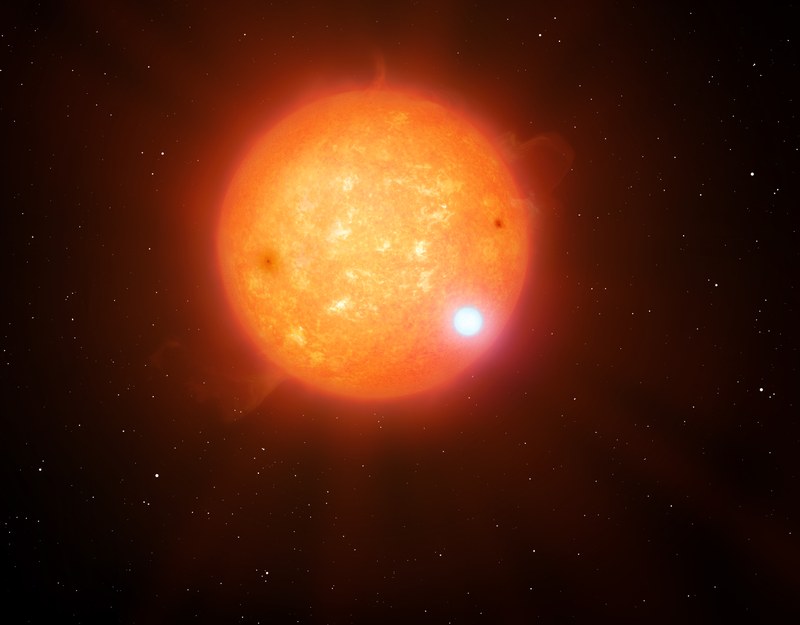Understanding the oldest stars in the Milky Way
Apr 09, 2019
A study led by UPC/IEEC has determined for the first time the mass and radius of one of the oldest stars in our Galaxy, allowing to validate the theoretical relationship between the mass and radius for this class of stars. Alberto Rebassa, a physics professor from our department in the group Astronomy and Astrophysics, has led the study.
An international team, led by a researcher from the Universitat Politècnica de Catalunya · BarcelonaTech (UPC) and the Institute of Space Studies of Catalonia (IEEC), has measured for the first time the stellar parameters of a very old kind of stars, known as cool subdwarf stars, in our Galaxy, the Milky Way. Cool subdwarfs are stars like our Sun, but of smaller mass and radius, which formed during the beginning of the Milky Way and, therefore, carry important information about its structure and chemical evolution. The work has been done in collaboration with researchers from the University of Sheffield and the National Astronomical Observatories, Chinese Academy of Sciences.
When the Milky Way formed, the first stars were mainly composed of hydrogen. Heavier elements than hydrogen or helium are considered as metals in astronomy and their presence determines the metallicity of a star. As time passed and stars died, the content of such metals in the Milky Way and in the new stars born increased. Therefore, old stars have lower metallicity than younger ones.
“Since old stars can reveal important information about the structure and the chemical evolution of the Milky Way, it is essential for astronomers to determine their most basic stellar parameters such as masses and radii”, explains Alberto Rebassa-Mansergas
Because old stars are faint and they are relatively rare in the vicinity of the Sun, few
cool subdwarfs are known in our solar neighbourhood. Currently, the radius of only 88 and the masses of six cool subdwarfs have been estimated. However, no mass and radius values for the same cool subdwarf had been accurately measured, leaving the theoretical studies for such stars untested until now. In their work, the researchers have found the first cool subdwarf in an eclipsing binary system, a system where two stars orbit one another, in this case, a cool subdwarf and a white dwarf. When one of the stars passes in front of the other from our perspective on Earth, astronomers call this system an eclipsing binary system.
“Eclipsing binaries offer the opportunity to measure directly the masses and radii of the two components with unprecedented precision,'' argues Rebassa-Mansergas.
Accurate mass and radius determinations of a cool subdwarf in an eclipsing binary
Rebassa-Mansergas, A.; Parsons, S.G.; Dhillon, V.S.; Ren, J.; Littlefair, S.P.; Marsh, T.R.; Torres, S.
Nature Astronomy, 10.1038
DOI: S41550-019-0746-7

Share: